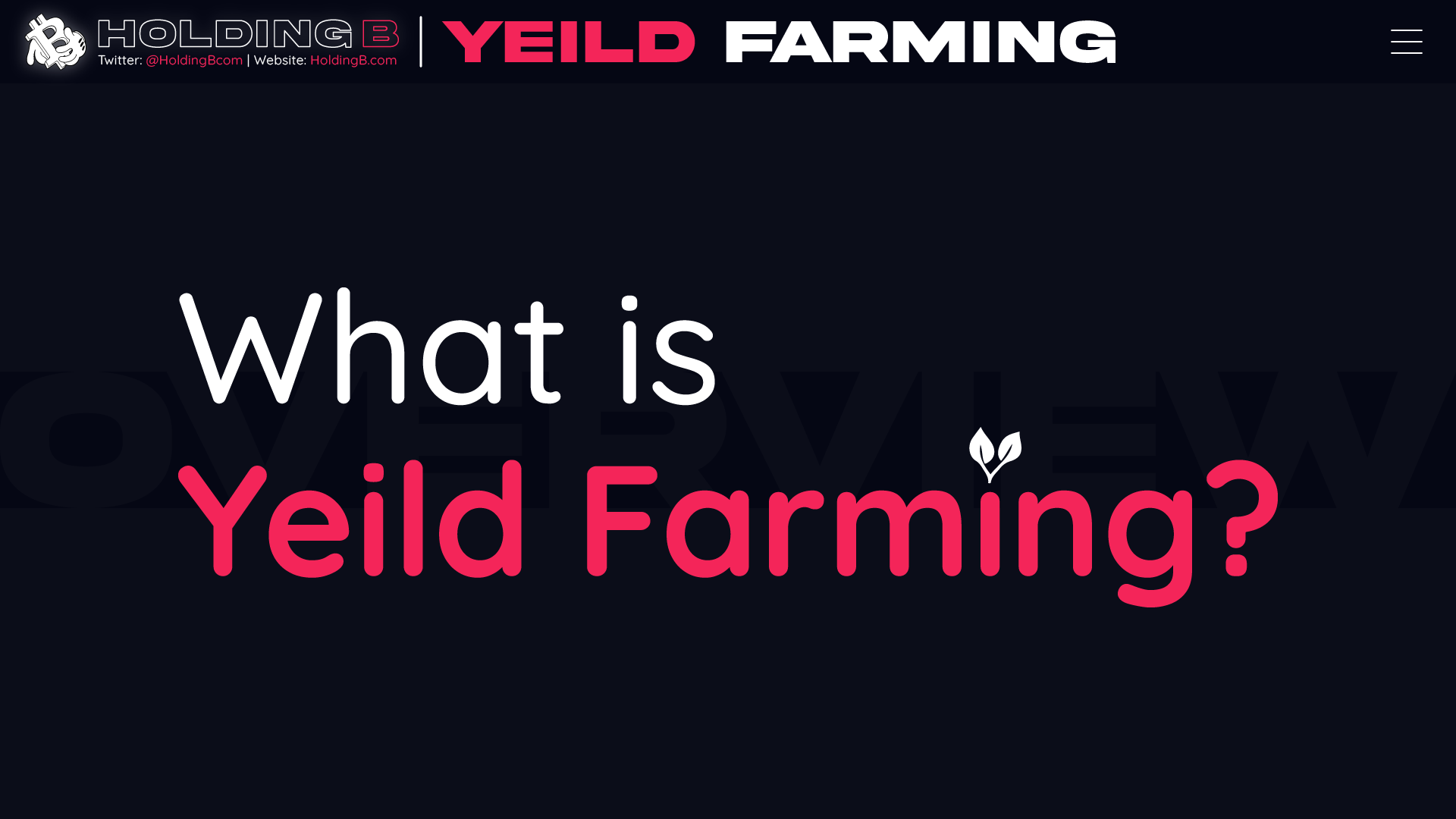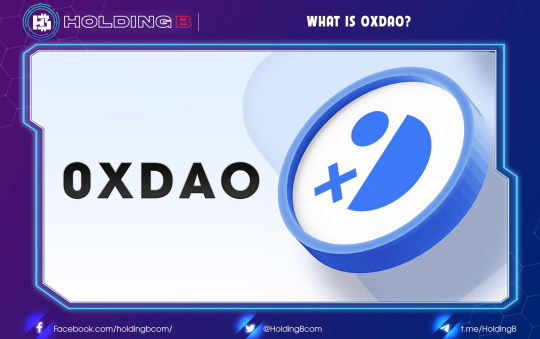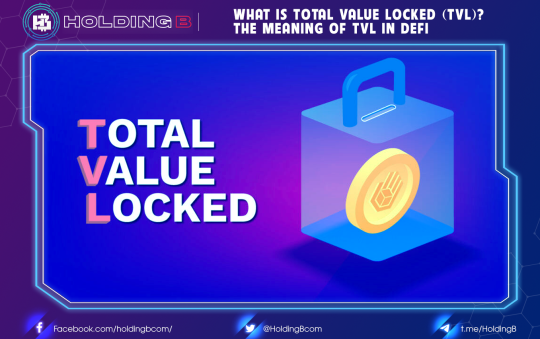For farmers, Yeild is a concept used to measure the total yield of their agricultural products. In Defi, the main farmers are the users and the “yield” – the output obtained here is the increasing interest on the original assets they deposit for the Defi platform.
For example, when you deposit TRON as collateral to the DeFi JUST platform, you will receive the USDJ virtual currency.
To put it more clearly, Yield Farming is a method of making interest and transaction fees on the DeFi platform. The investor who deposits money into the liquidity fund of a pair of coins will receive a portion of the fee when the user converts those two units of money.
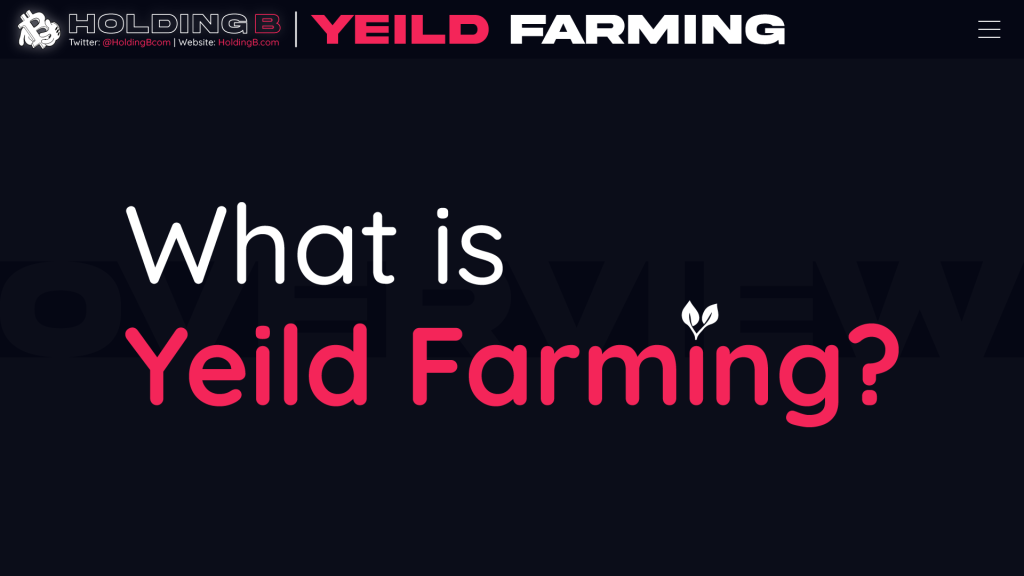
HISTORY OF YIELD FARMING
Synthetix, the blockchain’s integrated asset protocol pioneered Yield Farming in July 2019 when it began rewarding the project’s SNX admin token (LP) sETH/ETH on Uniswap V1.
A year later, the compound finance lending protocol launched the Yield Farming program focused on COMP admin tokens. The program is still ongoing, awarding COMP tokens to Compound’s borrowers and lenders in line with the level of activity of these users.
Compound’s deployment of Yield Farming COMP has catalyticized an increase in interest in exploiting liquidity, with this interest having increased since these types of passive income opportunities began to appear regularly across DeFi. Indeed, Yield Farming is now the primary vehicle for emerging DeFi projects to launch their projects with liquidity.
HOW DOES YIELD FARMING WORK?
Yield Farming is closely related to the Automated Market Maker (AMM) model. Popular AMM models can be mentioned as Uniswap, Mooniswap, Balancer …
In Yield Farming, liquidity providers (LP) provide liquidity into the liquidity pool of the protocol. Liquidity pool simply means that a smart contract contains money in it. These pools allow users to borrow, lend or exchange between tokens.
Liquidity Pool’s revenue incurred is the transaction fee when the end-user performs activities in the pool, such as borrowing, lending, exchanging tokens. This revenue will be split to lp as a percentage of liquidity that they have provided in the pool.
In addition to fee revenue, some protocols deploy bootstrapping liquidity to protocols by distributing native tokens to LPs that have provided liquidity into their protocols (possibly throughout the protocol’s pool or some specified pool). This is called liquidity mining.
Liquidity mining can be understood as a narrower concept than Yield Farming. Specifically, LPs will in addition to receiving money when providing liquidity, they will receive another number of new tokens.
WHAT FORMS OF YIELD FARMING ARE THERE?
There are two main types of Yield Farming: Yield Farm and Stake Farm. Both of these farming coins require users to deposit cryptocurrencies into smart contracts. The differentiating factor is the type of smart contract involved.
Yield Farm LP
In Yield Farm LP, users deposit cryptocurrencies into a smart contract to facilitate a programmable liquidity pool. Such a pool acts as a pair of decentralized transactions between two or sometimes multiple cryptocurrencies and transactions are made in cryptocurrencies offered by LPs.
In exchange for deposits, the DeFi app rewards the LP with a token. For example, SLP tokens for Sushi liquidity providers. These tokens can be used to take basic deposits from the liquidity pool at any time plus any interest you have accumulated.
These LP tokens are important because DeFi applications run liquidity mining programs that set up a stake interface to send these LP tokens. This locks your liquidity and constantly automatically earns you admin token rewards as long as your LP token gets stakes.
Staking Farm
In a Staking Farm, users deposit cryptocurrencies into a programmable smart contract staking pool. Instead of being a decentralized trading pair as above, the staking pool is like a vault for just one asset class. It does not facilitate transactions but rather receives deposits.
These farms provide an easier experience for everyone than Farm LP. That’s because the staking farm only requires users to deposit a single asset to earn passive income, as opposed to serving as an LP on DEX.
IMPORTANT TERMS IN YIELD FARMING
What is TVL?
TVL stands for the total value of the locked asset. TVL is used to indicate the number of cryptocurrencies that have been deposited into the farm’s basic liquidity groups or staking pools. Accordingly, everyone in DeFi uses TVL similar to how the Managed Asset Index (AUM) is used in traditional finance. If you find that a particular Yield Farming has a TVL of $500 million, that means there’s now $500 million deposited on that farm.
What are APY and APR?
In the DeFi ecosystem, projects use 2 ratios of APR and APY to calculate the annual percentage to let users know how much interest they make when deposited into yield farming.
APR simply tracks how many interest depositors will earn from their cryptocurrency over the course of a year. If a farm always offers a 5% APR and you provide $100 for that farm, then after a year, you’ll have $105. On the other hand, APY tracks how much margin will be earned over one year if its interest income is continually reinvested in Yield Farming.
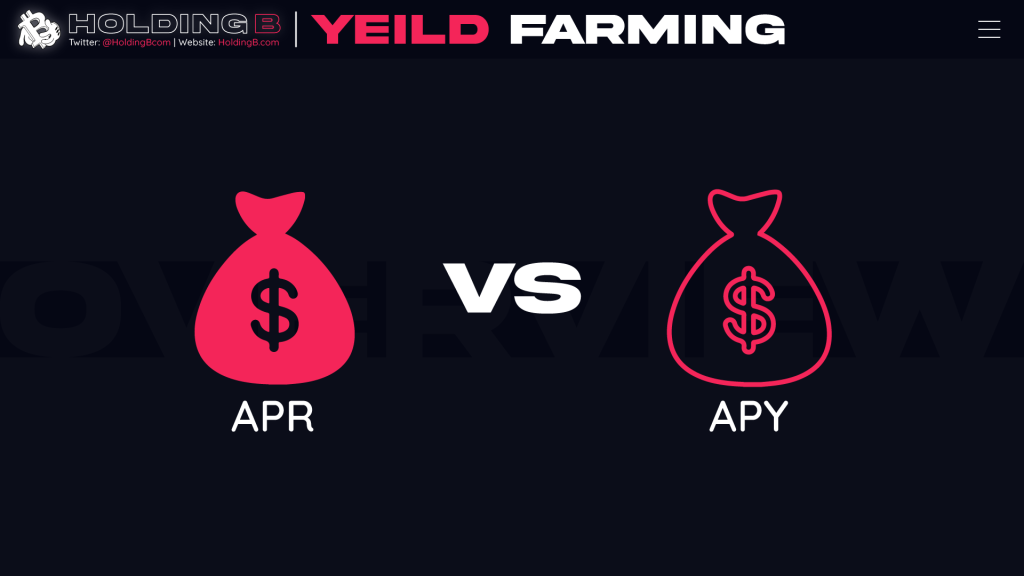
Whether a project uses APR or APY to track its profit opportunities, keep in mind that farm earnings fluctuate constantly according to changes in participants, token distribution schedules, and transaction fees. In this sense, think of APR or APY as just quick information about current performance rather than fixed rates.
Since last summer’s DeFi 2020, users have pursued APY projects thousands of percent with the desire to get rich quickly. However, these protocols can be high risk and vulnerable to fraud.
WHY IS YIELD FARMING BOOMING?
The first name mentioned above is COMP – a Governance token, which provides administrative rights to token holders. From there, DEX platforms began distributing these tokens algorithmically, and with incentives aimed at attracting LPs to provide liquidity to the pool.
Therefore, thanks to COMP, DeFi projects have been applied thoroughly to come up with plans to attract huge capital to DeFi projects.
To date, more than $9 billion has been locked by Total Value Locked (TVL) in DeFi!
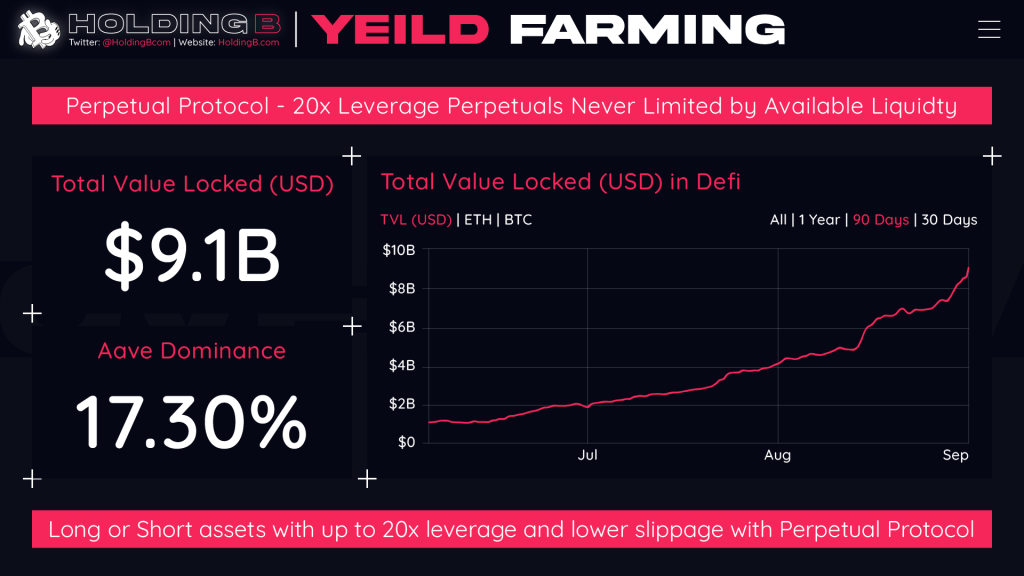
THE EFFECTS OF YIELD FARMING
Yield Farming’s influence on DeFi is indisputable. DeFi has grown rapidly since Compound launched Liquidity Mining with comp admin tokens, and then led to other projects launching similar programs to attract liquidity to the protocol, causing DeFi to heat up more than ever.
Liquidity is poured from one protocol to another. High profits plus strong governance tokens have made unproductive capital ineffective. Start moving into Defi protocols to make farming and make a profit, becoming productive capital.
Money is flowing into DeFi so DeFi projects are constantly emerging with new ways of delivering, taking advantage of existing protocols. One of them is Yam Finance.
Total value Locked (TVL) in the DeFi ecosystem has more than sevenfold, from $1 billion to $7 billion in three months.
For those who do not understand the Total Value locked (TVL): TVL is an indicator used to measure the “health” of yield farming and DeFi platforms. TVL measures the number of crypto assets locked in deFi protocols such as lending protocols and other forms.
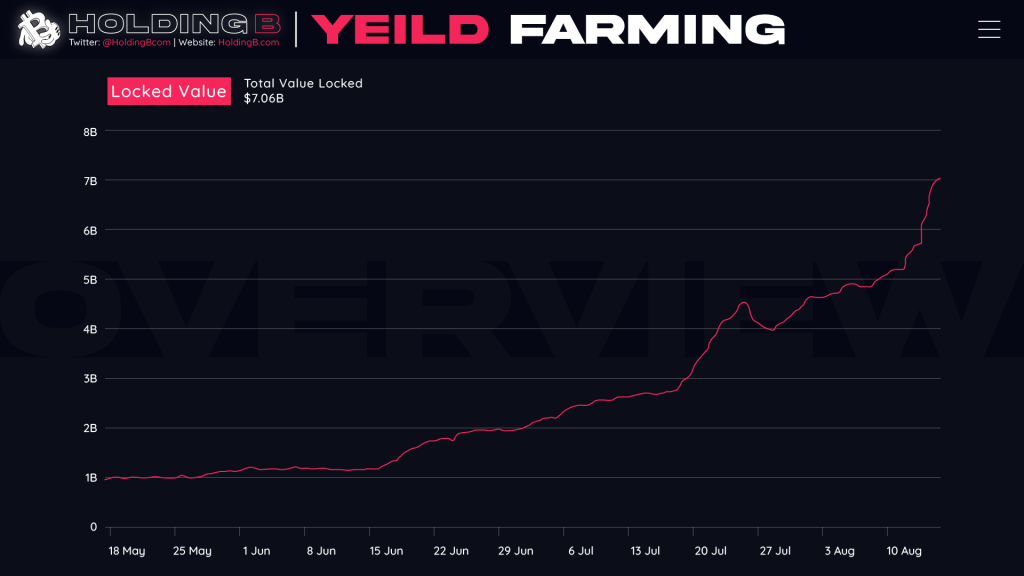
In addition, governance tokens and related DeFi projects have both increased sharply.

Looking at the chart above, we can see that the price of COMP reached its highest level (ATH) in June, thanks to COMP farming causing comp demand to increase sharply.
ADVANTAGES OF YIELD FARMING
- Allows people to easily earn passive income from cryptocurrencies.
- Offers a wide range of opportunities, from low-use yield farming to active high yield farming.
- Gives users the ability to participate in decisions about the DeFi protocol through administrative token rewards.
- Help users better understand DeFi, mastering future DeFi improvements.
RISKS OF YIELD FARMING
Most yield farming strategies that bring APR/APY (Annual Percentage Rate) are largely complex and require users to be very aware of what they are doing. If you don’t understand how real transactions are working, the chances of losing money are very high.
SOME OF THE RISKS OF YIELD FARMING
- Smart Contract Risk: Most protocols are developed by small teams, which are less likely to be buggy in a smart contract (because there is no budget to audit). The audited protocols are also capable of bugging and having money stolen as in the case of Bzrx, Curve…
- System Design Risk: In some protocols such as Uniswap, providing liquidity can cause LPs to suffer impermanent losses when the price of an asset in a pool fluctuates rapidly. or LP may be withdrawn when providing liquidity as was the case in Balancer.
- Liquidated risk: Collateral can be heavily volatile and the user’s position is liquidated when the market is volatile.
- Bubble Risk: Since COMP launched Liquidity mining, the entire DeFi community started FOMO a lot, leading to bubble risk appearing in DeFi.
HOW TO JOIN YIELD FARMING?
To get started, you’ll need to know defi projects with yield farming to sign up for an account. You need to hold cryptocurrencies in your wallet, usually, eth or ERC-20 tokens, which you can also send BTC to. Provide liquidity for any pool supported by connecting your wallet to the project website.
Then choose the type of property you want to deposit as well as its quantity. The platform will display the appropriate information regarding the bonus you will receive as well as the expected time. If you confirm your consent then you have officially joined yield farming to earn an income.
You also need to note that the interest rates will be different in different DeFi platforms so want to optimize you can try with many platforms to choose the best. It also depends on how much money and how long you deposit.
THE 10 MOST POPULAR YIELD FARMING PROTOCOLS
Active users will often use a variety of DeFi platforms to optimize the return on their deposited amount. Here are the 10 most popular yield farming:
Aave
Aave is an open-source decentralized lending and lending protocol to create currency markets where users can borrow assets and earn compound interest when lending as AAVE tokens (formerly LEND). Aave has the highest locked TVL of all DeFi protocols, reaching more than $21 billion by August 2021. Users can earn an APR of up to 15% when lending on AAVE.
Compound
The compound is a currency market for lending and borrowing assets, where compound interest rates are adjusted according to algorithms as well as COMP governance tokens can be earned. It is tested and reviewed to ensure the highest level of security standards. Total supply is over $16 billion by August 2021 and APY ranges from 0.21% to 3%.
Curve Finance
Curve Finance is a DEX that allows users and other decentralized protocols to exchange stablecoins for low fees and low slippage using its unique market-creating algorithm. The basic APY can increase by up to 10%, while APY rewards can increase by more than 40%. Stablecoin groups are generally safer because they don’t lose fixed value.
UniSwap
Uniswap is an extremely popular DEX and AMM that allows users to swap almost any pair of ERC20 tokens without an intermediary. Liquidity providers must stake both sides of the liquidity group at a 50/50 ratio and in return earn a percentage of transaction fees as well as UNI governance tokens.
There are two live versions – Uniswap V2 and V3. The latest version, Uniswap V3, is a growing protocol ecosystem with over 200 integrations. TVL is $5 billion for V2 and more than $2 billion for V3 as of August 2021.
Instadapp
Instadapp is an advanced platform to leverage deFi’s potential. Users can manage and build their DeFi portfolios, and developers can build DeFi infrastructure using their platforms. As of August 2021, more than $9.4 billion is locked up on Instadapp.
SushiSwap
SushiSwap is an offshoot of Uniswap, which has caused a great buzz in the community. It is currently a DeFi ecosystem, with multi-chain AMM, lending and leverage markets, onchain mini Dapps, and launchers. TVL on the platform was $3.55 billion by August 2021.
PancakeSwap
PancakeSwap is a DEX built on the Binance Smart Chain (BSC) network for bep20 tokens. PancakeSwap uses an automated market creation (AMM) model where users trade with the liquidity group. It has the highest TVL among BSC protocols, with more than $4.9 billion locked in as of August 2021. It focuses heavily on gambling, lotteries, auctions, and NFTcollectibles. APY can rise as high as 400%.
Venus Protocol
Venus Protocol is an algorithm-based currency market system aimed at developing a lending and credit system based on the Binance Smart Chain. Users provide collateral to the network and earn APY to lend, while borrowers have to pay interest.
Venus differs in its ability to use collateral offered to the market not only to borrow other assets but also to mint synthetic stablecoins. These synthetic stablecoins are backed by a cryptocurrency pool. TVL was over $3.3 billion as of August 2021.
Balancer
Balancer is automated portfolio management and trading platform. Its liquidity protocol distinguishes itself through flexible stakes. It does not require lenders to add equal liquidity to both groups. Instead, liquidity providers can create custom liquidity groups with different token ratios. More than $1.8 billion was locked down in August 2021.
Yearn. finance
Yearn. finance is an automated decentralized aggregated protocol that allows productive users to use different lending protocols such as Aave and Compound for the highest yields.
According to the Yearn. finance algorithm will look for the most profitable yield farming services and use the recovery method to maximize their profits. Yearn. finance made waves in 2020 when its YFI governance token increased to more than $40,000 in value. Users can earn up to 80% APY in Yearn and $3.4 billion locked in the protocol.
THE FUTURE AND DIFFICULTIES OF YIELD FARMING
The potential for farming coin development
As DeFi and Yield Farming continue to gain popularity, users will look to opportunities where they can trade at a reasonable and fast cost.
In the Ethereumecosystem, several layer 2 (L2) scaling solutions such as Arbitrum, Optimism, and zkSync are currently in development and are offering ultra-cheap and ultra-fast transactions. These L2s, which inherit security directly from Ethereum and regulate fees in ETH, will become central to improving productivity because of their powerful scalability. Furthermore, alternative scaling solutions such as Polygon sidechain, which caters to Ethereum users, will remain prominent as more DeFi users start yield farming across multiple chains and L2s.
Difficulty to face
Perhaps the biggest difficulty yield farming faces is coming from the regulator. As MarginATM has reported, the SEC has threatened to sue coinbase for allowing customers to make interest from sending digital assets, prompting the company to suspend the product until at least October.
Last month, SEC Chairman Gary Gensler said the agency could focus on investigating decentralized financial projects. Or in July a Wall Street Journal issue issue issue criticized Yield Farming on DeFi as a scam.
The move is also likely to cause concern among companies such as BlockFi Inc., Gemini Trust Co., and Celsius Network that have offered services that allow customers to make interest in lending their tokens. Not long ago, the U.S. state of New Jersey asked BlockFi to stop marketing some loan-related products.
CONCLUSION
Although the short-term profit that Yield Farming brings is very attractive. But for it to not only be a fading trend, but creators in the DeFi space also need to give their products the practical benefits associated with life even more.
Hopefully, we can see Yield Farming not only in the cryptocurrency space but also in traditional financial flows in the future.

